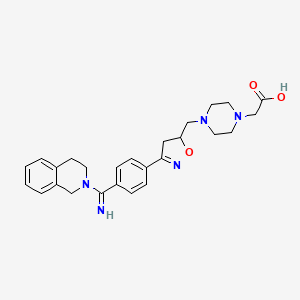|
Name: N-(1-phenethylpiperidin-4-yl)-N-phenylbutyramide, N-(1-phenethylpiperidin-4-yl)-N-phenylbutanamide calusterone (7-beta,17-alpha-dimethyl-17-beta-hydroxyandrost-4-en-3-one)
Type: Androgenic steroid
AKA: Methosarb

|
|
II. Natural Derivative
Synthetic substance, no natural derivative
 |
|
III. Chemical Profile (IUPAC name)

|
|
IV. History
n phenethylpiperidin 4 yl) n phenylbutyramide, n (1 phenethylpiperidin 4 yl) n phenylbutanamide calusterone (7 beta,17 alpha dimethyl 17 beta hydroxyandrost 4 en 3 one) was first synthesized in the 1950s.
The history of this compound dates back to the early 1950s when a pharmaceutical company in London, England, called Glaxo, was looking to develop a new anabolic steroid. Glaxo had synthesized and patented a series of anabolic steroids that were all based on the steroid testosterone. However, they had not been able to synthesize an anabolic steroid with a higher androgenic effect than testosterone. Glaxo had therefore decided to make a new steroid and called it nandrolone. This steroid was a mixture of testosterone and nandrolone. It was then called nandrolone. This compound was

|
|
V. Legal Information
This combination of substances, including Calusterone, an anabolic steroid, is regulated as a controlled substance in many jurisdictions due to its potential for misuse in sports. In the US, Calusterone is classified under Schedule III. Globally, its use is tightly controlled to prevent abuse and manage health risks.
US Federal Schedule - III
Schedule III drugs, substances, or chemicals are defined as drugs with a moderate to low potential for physical and psychological dependence. Schedule III drugs abuse potential is less than Schedule I and Schedule II drugs but more than Schedule IV. Some examples of Schedule III drugs are: products containing less than 90 milligrams of codeine per dosage unit (Tylenol with codeine), ketamine, anabolic steroids, testosterone.
Key US Federal Policies:
Controlled Substances Act. Public Law: Public Law 91-513 (text can be found on GovInfo) (https://www.dea.gov/drug-information/csa). Date enacted: October 27, 1970.
|
|
VI. Physical Effects
This combination includes a phenylbutyramide and a potent anabolic steroid. The phenylbutyramide acts as an opioid, providing pain relief and sedation, while the anabolic steroid enhances muscle growth. Short-term effects include pain relief and increased muscle mass, while long-term use of either can lead to severe health complications. Overdose risks involve severe sedation and cardiovascular issues. Safe use requires medical supervision. Recent research highlights their effectiveness and potential health risks.  |
|
VII. Psychological Effects
This compound, an anabolic steroid, impacts mood and aggression through androgen receptors. Immediate effects include mood enhancement and increased aggression, with long-term use leading to psychological issues and cognitive impairments. Research explores its effects on mental health and overall safety.
 |
|
VIII. Culture
N-(1-Phenethylpiperidin-4-yl)-N-phenylbutyramide is a synthetic opioid with potent effects, classifying it as a downer. Short-term use provides pain relief, while long-term use can lead to dependence and tolerance. Overdose risks are high, potentially causing severe respiratory depression and fatal outcomes. Safe dosages are not well-established, with lower doses advised. Recent research highlights its high potency and associated health risks. Physical effects include drowsiness, constricted pupils, and respiratory depression.
 |
